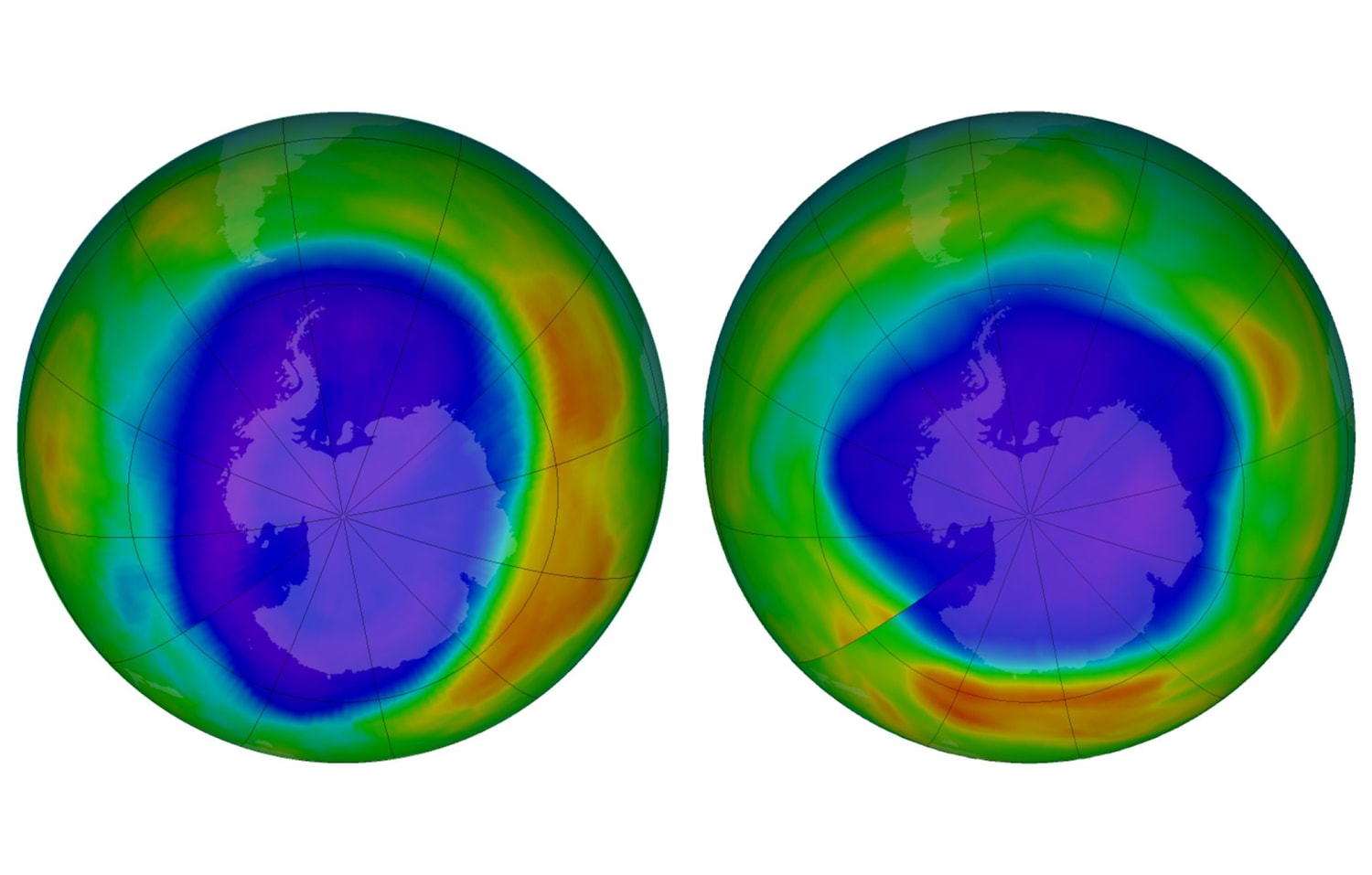Ozone Layer Begins to Heal
 In January, a panel of climate scientists backed by the United Nations made an encouraging announcement. They said that the Earth’s protective ozone layer was on track to make a full recovery within the next four decades.The ozone layer is a thin layer of O3* molecules in the Earth’s stratosphere. It protects our planet by absorbing much of the sun’s radiation. These harmful UV rays can cause problems such as skin cancer and eye cataracts, and can even damage your DNA.In the 1970s, scientists noticed that the ozone layer was being depleted. After conducting extensive tests, they found that a group of chemicals called chlorofluorocarbons (CFCs)* were responsible. These chemicals were being produced in excessive amounts during the manufacture of refrigerators, air conditioners, aerosol cans, and other manmade products.Later, in 1985, the scientists discovered that a massive hole had formed in the ozone layer over Antarctica. News of the hole and its potential danger sent shockwaves throughout the scientific community. Climate experts began to pressure their respective governments, and in just two years, a deal to phase out CFCs was signed by 46 countries.The deal, named the Montreal Protocol, became the first United Nations treaty to be universally ratified by all UN member states. It was proof that the international community could work together to address common problems. The Antarctic ozone hole continued to expand for some time after the signing of the Montreal Protocol, due to leftover CFCs in the atmosphere. Since 2000, however, it has been closing slowly.According to the latest U.N. report, the ozone layer should return to its pre-1980 levels if current policies and regulations are maintained. Experts estimate that by 2066 the ozone layer will be restored over Antarctica, where it was most depleted. Everywhere else, it should be back to normal in about 20 years.
In January, a panel of climate scientists backed by the United Nations made an encouraging announcement. They said that the Earth’s protective ozone layer was on track to make a full recovery within the next four decades.The ozone layer is a thin layer of O3* molecules in the Earth’s stratosphere. It protects our planet by absorbing much of the sun’s radiation. These harmful UV rays can cause problems such as skin cancer and eye cataracts, and can even damage your DNA.In the 1970s, scientists noticed that the ozone layer was being depleted. After conducting extensive tests, they found that a group of chemicals called chlorofluorocarbons (CFCs)* were responsible. These chemicals were being produced in excessive amounts during the manufacture of refrigerators, air conditioners, aerosol cans, and other manmade products.Later, in 1985, the scientists discovered that a massive hole had formed in the ozone layer over Antarctica. News of the hole and its potential danger sent shockwaves throughout the scientific community. Climate experts began to pressure their respective governments, and in just two years, a deal to phase out CFCs was signed by 46 countries.The deal, named the Montreal Protocol, became the first United Nations treaty to be universally ratified by all UN member states. It was proof that the international community could work together to address common problems. The Antarctic ozone hole continued to expand for some time after the signing of the Montreal Protocol, due to leftover CFCs in the atmosphere. Since 2000, however, it has been closing slowly.According to the latest U.N. report, the ozone layer should return to its pre-1980 levels if current policies and regulations are maintained. Experts estimate that by 2066 the ozone layer will be restored over Antarctica, where it was most depleted. Everywhere else, it should be back to normal in about 20 years. Questions:1. What encouraging announcement did a panel of climate scientists make? How long will the ozone layer make a full recovery?2. What is the ozone layer? Why is it important to the planet?3. What was responsible for the depletion of the ozone layer? When did climate experts begin to pressure their respective governments?4. What will make the ozone layer go back to its pre-1980s levels?
Questions:1. What encouraging announcement did a panel of climate scientists make? How long will the ozone layer make a full recovery?2. What is the ozone layer? Why is it important to the planet?3. What was responsible for the depletion of the ozone layer? When did climate experts begin to pressure their respective governments?4. What will make the ozone layer go back to its pre-1980s levels?5. What role did your country take in the effort of closing the ozone layer’s hole? Is the effort enough or more is needed?
